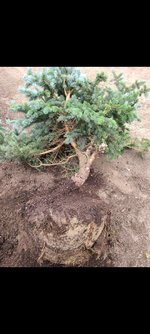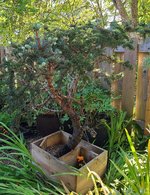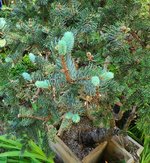Jpxc17
Mame
Today I repotted a very large grafted Colorado Blue Spruce. Not ideal timing but I didn't have any other options and had to get it done.
It was balled and burlapped in 100% heavy clay. I did my best to try to salvage as many roots as I could but the clay kept breaking them off.
The tree is unfortunately very low on roots but has a massive foliage mass that I did not touch.
My question is, due to the huge discrepancy between roots and foliage mass, should I prune some of the foliage? It doesn't seem like the root system would be able to support all the foliage. I know the usual advice is to leave the foliage alone, but is this still the case with a very small remaining root system?
Any advice is much appreciated!
It was balled and burlapped in 100% heavy clay. I did my best to try to salvage as many roots as I could but the clay kept breaking them off.
The tree is unfortunately very low on roots but has a massive foliage mass that I did not touch.
My question is, due to the huge discrepancy between roots and foliage mass, should I prune some of the foliage? It doesn't seem like the root system would be able to support all the foliage. I know the usual advice is to leave the foliage alone, but is this still the case with a very small remaining root system?
Any advice is much appreciated!




